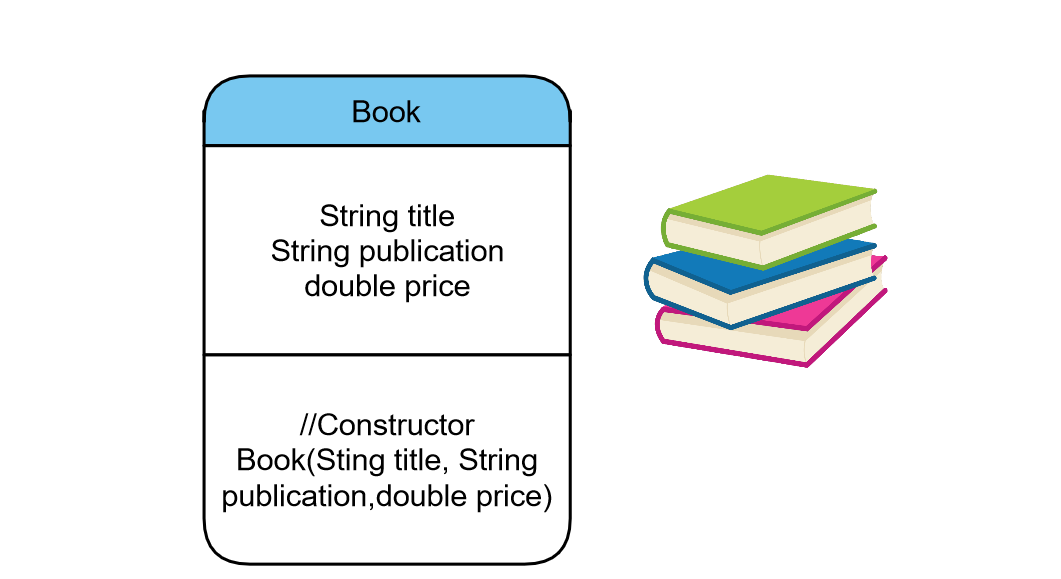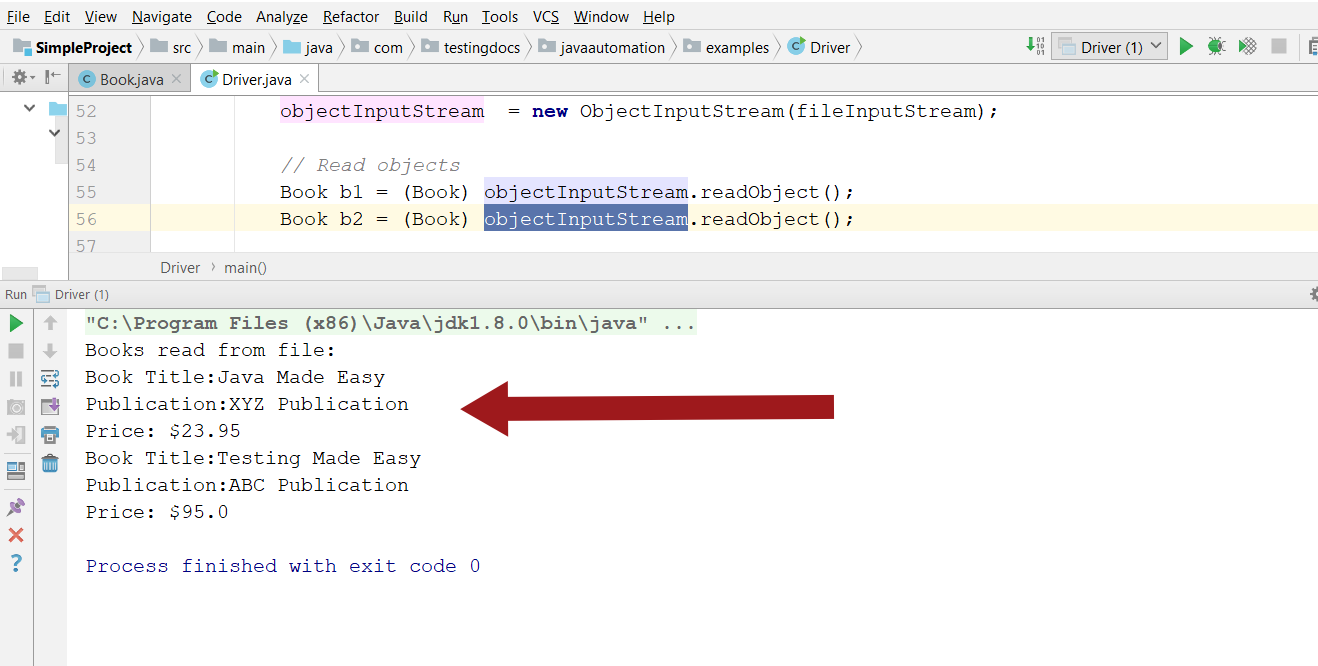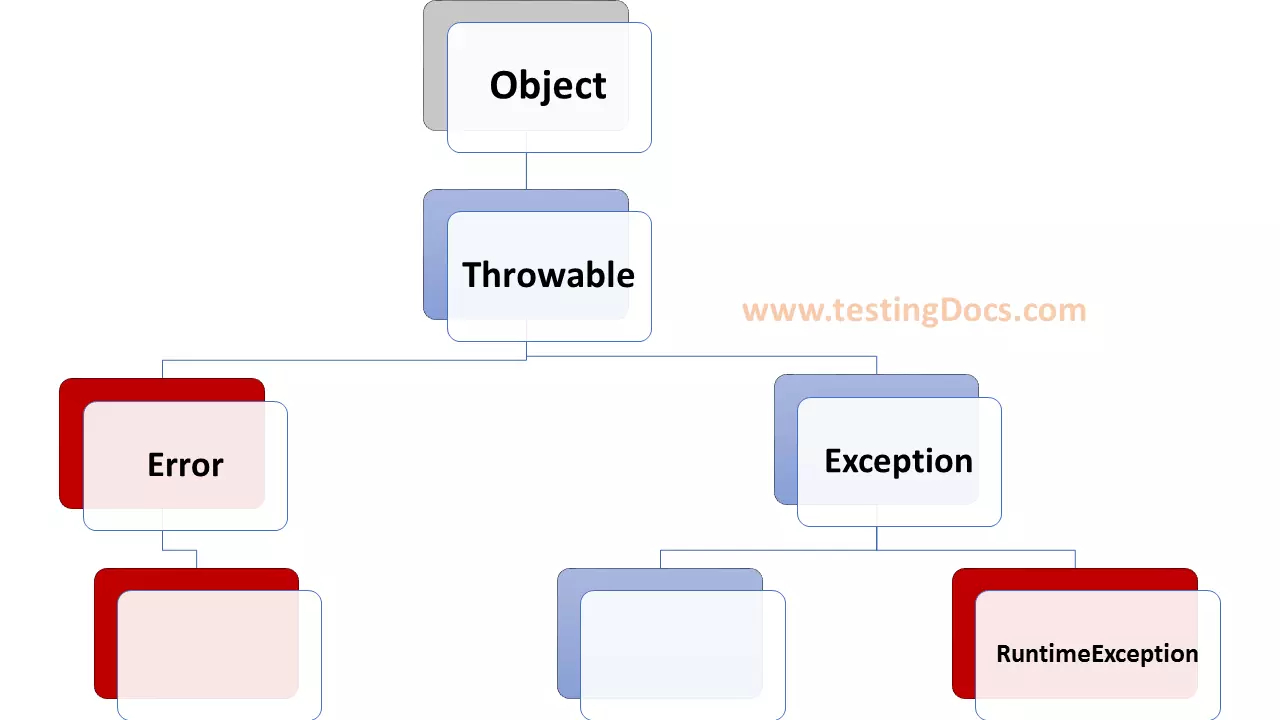Java Serialization and De-serialization
Overview
Java serialization is a process of writing the state of the object into a writable byte stream. Serializable classes can be written to a file on your computer. The reverse process of serialization is called de-serialization. i.e restoring the state of the object from the byte stream.
Java Serialization
Serialization of a class is enabled by the class implementing the java.io.Serializable interface. Classes that do not implement this interface will not have any of their state serialized or de-serialized. Serializable is a marker interface.
Let’s understand the concept with an example. Serialization of book object to stream:
objectOutputStream.writeObject(book1);
De-serialization of book object from the stream:
objectInputStream.readObject();
The writeObject() method is responsible for writing the state of the object for its particular class so that the corresponding readObject() method can restore it.
Consider the following Java class Book with the following instance variables.

Book Class
import java.io.Serializable;
public class Book implements Serializable {
private static final long serialVersionUID = 1L;
//Instance variables of the class
private String title;
private String publication;
double price;
// Constructor
public Book(String title, String publication,double price) {
this.title=title;
this.publication=publication;
this.price=price;
}
//tostring method
public String toString() {
return "Book Title:" + title + "\n"
+ "Publication:" + publication + "\n"
+ "Price: $" + price;
}
}
Driver Class
Driver class is used to demonstrate the serialization and de-serialization process of the Book class.
import java.io.File;
import java.io.FileInputStream;
import java.io.FileOutputStream;
import java.io.IOException;
import java.io.ObjectInputStream;
import java.io.ObjectOutputStream;
public class Driver {
public static void main(String[] args) {
Driver driver= new Driver();
FileOutputStream fileOuputStream = null;
ObjectOutputStream objectOutputStream = null;
FileInputStream fileInputStream = null;
ObjectInputStream objectInputStream = null;
String filename = "bookObjects.data";
// Instantiate objects
Book book1=new Book("Java Made Easy","XYZ Publication",23.95);
Book book2=new Book("Testing Made Easy","ABC Publication",95.0);
try {
fileOuputStream = new FileOutputStream(filename);
objectOutputStream = new ObjectOutputStream(fileOuputStream);
objectOutputStream.writeObject(book1);
objectOutputStream.writeObject(book2);
} catch (Exception ex) {
ex.printStackTrace();
} finally {
if (fileOuputStream != null) {
try {
fileOuputStream.close();
} catch (IOException e) {
e.printStackTrace();
}
}
if (objectOutputStream != null) {
try {
objectOutputStream.close();
} catch (IOException e) {
e.printStackTrace();
}
}
}
try {
fileInputStream = new FileInputStream(new File(filename));
objectInputStream = new ObjectInputStream(fileInputStream);
// Read objects
Book b1 = (Book) objectInputStream.readObject();
Book b2 = (Book) objectInputStream.readObject();
System.out.println("Books read from file:");
System.out.println(b1.toString());
System.out.println(b2.toString());
} catch (Exception ex) {
ex.printStackTrace();
} finally {
if (fileInputStream != null) {
try {
fileInputStream.close();
} catch (IOException e) {
e.printStackTrace();
}
}
if (objectInputStream != null) {
try {
objectInputStream.close();
} catch (IOException e) {
e.printStackTrace();
}
}
}
}
}
Program Output
Books read from file:
Book Title:Java Made Easy
Publication:XYZ Publication
Price: $23.95
Book Title:Testing Made Easy
Publication:ABC Publication
Price: $95.0

—
Java Tutorials
Java Tutorial on this website:
https://www.testingdocs.com/java-tutorial/
For more information on Java, visit the official website :





